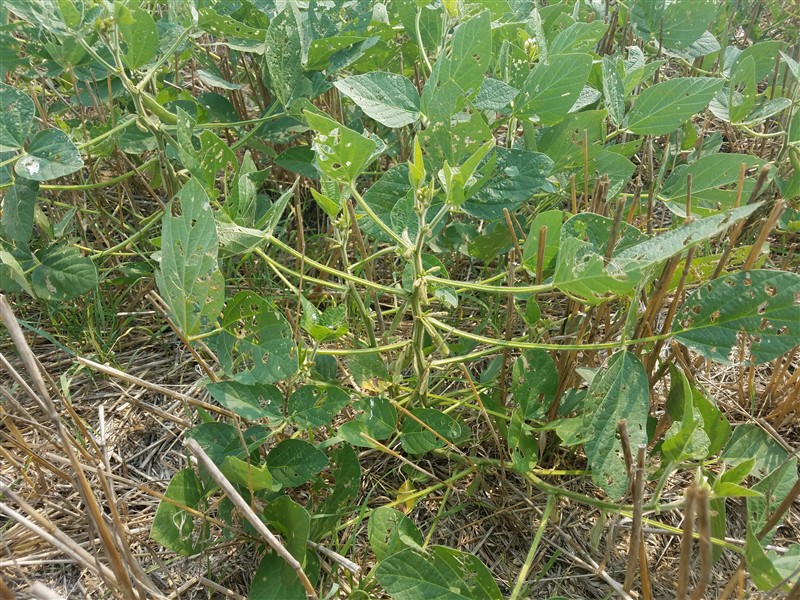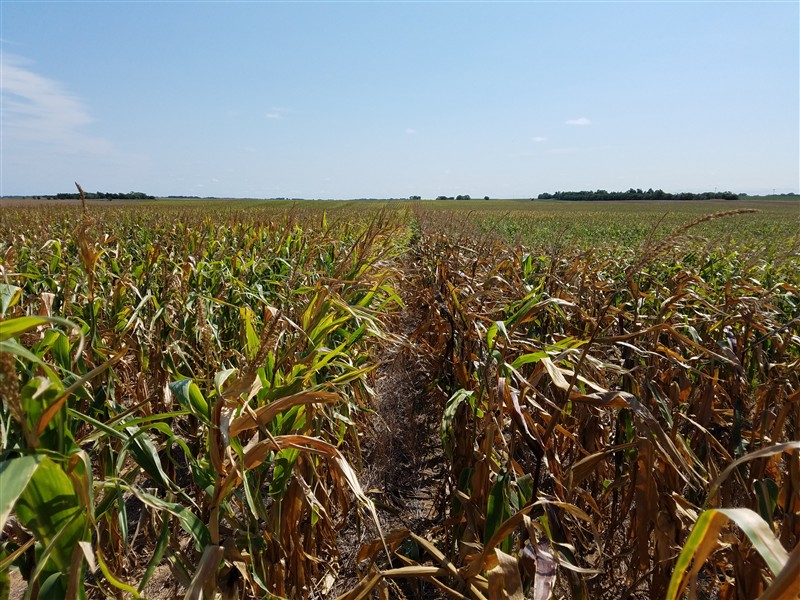| Kansas is projected to harvest 5 myn acres of corn.. for every 2 irrigated acres.. there are 3 dryland acres with a state average yield of 133 in the last Crop production report. You can look at the drought monitor and see that a big chunk of the central part of the state is dry.. I talked to my neighbor last night who's BEST dryland corn field was in the low 40's.. which means they are probably gonna average somewhere in the 30's.. less than half of what they did last year.
Although light this is going to be somewhat representative of the central part of the state.. see drought monitor. Although as you move east.. last year if they got.. 150.. more like 75 this year.. 120.. more like 60.. 100.. less than 50 etc... We're on the Wetter Western fringe which actually got some rains.. (lol.. you got to go to SW Kansas to see the rains.. hi Todd! ;-) Anywho.. we're probably going to average in the 60's.. vs like 85 last year.. so not as bad.. but still "down."
A merchandiser friend of mine who works for a coop with 50+ elevators says Ks will average below 130 for corn.. even though some irrigated fields will probably do well over 200.. some over 230..?? state wide about 100 myn bushels less than last year.. IN SPITE OF MORE ACRES planted.
Soybeans.. we added 700,000 acres 2nd only behind North Dakota which added about a myn.. There's 4 dryland acres of Soybeans for every irrigated acre.. in the Central part of the state.. half or more of these are planted behind dryland wheat.. (see my pictures below..)
It's this central area of the state which flexed from dryland wheat production.. (lowest planted acres in 100 years..) to Corn and Soybeans.. Kansas planted more Corn and Beans vs Wheat this year.. the BULK of this switch occured in the brown area of the drought monitor in the state.. see below..



Last year some of these fields did 40..50..60 bushels and the state averaged like 48 bushels.. lol. A LARGE chunk of this will STRUGGLE to make 30 bushels.. IN SPITE of adding 700,000 acres.. to 4.7 myn.. we'll probably harvest a SMALLER Soybean CROP vs 2016.
granted this is the worst of the worst.. but it's what's going on.. and yes I realize we're only a pebble on the beach but still..
We have an abundance of low protein wheat.. which can be blended into the ethanol mix at little problem up to about 30% the sorghum crop is usually blended with corn..at some plants the two are dumped together into the same receiving bin.. it would appear that we could blend off this LOW Protein wheat and get rid of it.. while stretching a lower fall crop.. again repeating from below
On a per lbs basis.. WHEAT is CHEAPER than Corn.. local elevator Wheat is $3.39 /60 = 0.0565 / lbs.. vs Corn at 3.26 / 56 = 0.0582 / lbs.. Sorghum is 3.01 but still a couple weeks away from a smaller planted crop comes to harvest.
Consequently, we could grind Wheat in the ethanol plants.. much like Canada does. We could get rid of 100 myn bushels or more this way... It's how they do it in Canada..
( http://www.ethanolproducer.com/articles/3624/move-over-corn-wheat%27s-king-in-western-canada )
Designing for Wheat
The key to building an efficient ethanol plant that's optimized for wheat is to make allowances for the grain's characteristics. Kansas-based ICM Inc. is completing the design for its first wheat ethanol plant this winter. "We're trying to move forward with wheat because it is the predominant starch in Canada and overseas," says Mark McCorkle, director of international project management. ICM was chosen to supply the design for Cyprus Agri-Energy Inc. which is proposing a plant at Shaunavon, Saskatchewan. ICM is working with two other Canadian wheat ethanol plants that are in the early planning stages, McCorkle adds.
The company plans to build on its solid reputation for engineering efficient corn ethanol projects to design a plant optimized for wheat. Wheat's higher viscosity levels and its tendency to foam are the biggest challenges, McCorkle says. Adding an extra enzyme at the beginning of the process helps to thin the slurry allowing a throughput and flow rate similar to corn. In addition to new enzymes, equipment modifications also help manage foaming issues. ICM has seen good results in foaming control by blending 10 percent corn into the wheat rather than using a more costly foaming agent such as corn oil. At the back end of the process, the amount of wet cake leftover after fermentation and distillation also increases when wheat is used as opposed to corn, which in turn increases the load on the centrifuges and driers, McCorkle explains. Once the wheat design is optimized, ICM will continue researching other feedstocks to meet its goal of developing a truly multi-grain feedstock facility for the international ethanol market.
We have an abundance of high test weight.. low protein wheat this year which would grind very well up to maybe 30%
Also the dryland corn crop is going to be much smaller this year here.
Edited by JonSCKs 9/7/2017 07:47
 (20170824_104000.jpg) (20170824_104000.jpg)
 (20170822_113709.jpg) (20170822_113709.jpg)
Attachments
----------------
 20170824_104000.jpg (270KB - 110 downloads) 20170824_104000.jpg (270KB - 110 downloads)
 20170822_113709.jpg (187KB - 98 downloads) 20170822_113709.jpg (187KB - 98 downloads)
|


 Early yield reports are pretty bad.. time to add wheat to the ethanol mix?
Early yield reports are pretty bad.. time to add wheat to the ethanol mix?